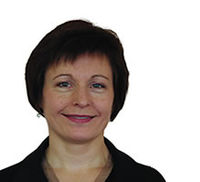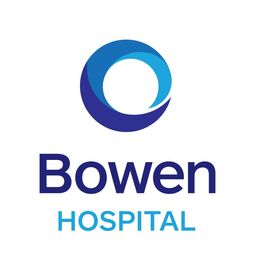Wellington > Private Hospitals & Specialists >
Bowen Hospital - Otolaryngology, Head & Neck Surgery
Private Surgical Service, ENT/ Head & Neck Surgery
Description
Bowen’s modern, conveniently located private surgical hospital offers the best in private healthcare services Wellington has to offer. With our team of highly trained and dedicated medical specialists, and the very latest in equipment and techniques, we have a proud reputation for the quality of our care.
Private healthcare allows choice, flexibility and access to specialists who use the latest techniques in treatment. You are free to nominate your specialist and can expect your consultation and treatment in a timely manner without waiting list restrictions. Early treatment and intervention is often pivotal in ensuring the best outcome for patients.
Consultants
-

Dr Catherine Ferguson
Otolaryngologist, ENT Specialist
-

Dr Francisco MacArthur
Otolaryngologist and ENT Specialist
Procedures / Treatments
Your adenoids may be removed as part of a tonsillectomy. This operation is also performed through your mouth.
Your adenoids may be removed as part of a tonsillectomy. This operation is also performed through your mouth.
A tiny camera attached to a long tube is inserted through your nose or mouth and passed down through the airways into your lungs. This allows the surgeon to make a diagnosis either by seeing directly what is causing the problem or by taking a small tissue (biopsy) or lung secretion sample.
A tiny camera attached to a long tube is inserted through your nose or mouth and passed down through the airways into your lungs. This allows the surgeon to make a diagnosis either by seeing directly what is causing the problem or by taking a small tissue (biopsy) or lung secretion sample.
An incision (cut) is made behind your ear and the skin pulled back exposing the mastoid bone. A hole is drilled through this bone to expose the cochlear. The electrodes of the cochlear implant are inserted into the cochlear while the receiver part of the implant is embedded into the skull just underneath the skin. The skin is then replaced back over the implant.
An incision (cut) is made behind your ear and the skin pulled back exposing the mastoid bone. A hole is drilled through this bone to expose the cochlear. The electrodes of the cochlear implant are inserted into the cochlear while the receiver part of the implant is embedded into the skull just underneath the skin. The skin is then replaced back over the implant.
A tiny camera attached to a tube (endoscope) is inserted into your nose. Very small instruments can be passed through the endoscope and used to remove small pieces of bone and soft tissue. This opens up the ventilation and drainage pathways in the outer wall of your nose.
A tiny camera attached to a tube (endoscope) is inserted into your nose. Very small instruments can be passed through the endoscope and used to remove small pieces of bone and soft tissue. This opens up the ventilation and drainage pathways in the outer wall of your nose.
This operation is performed through the ear canal. A hole is made in the eardrum and the middle ear drained. A small hollow tube (grommet) is placed in the eardrum hole which allows air into the middle ear.
This operation is performed through the ear canal. A hole is made in the eardrum and the middle ear drained. A small hollow tube (grommet) is placed in the eardrum hole which allows air into the middle ear.
A tiny camera attached to a long tube is inserted into your mouth and passed down through your pharynx into your oesophagus. This allows the surgeon to make a diagnosis either by seeing directly what is causing the problem or by taking a small tissue sample (biopsy).
A tiny camera attached to a long tube is inserted into your mouth and passed down through your pharynx into your oesophagus. This allows the surgeon to make a diagnosis either by seeing directly what is causing the problem or by taking a small tissue sample (biopsy).
Nasal polyps are removed by inserting small instruments through your nostrils which can grasp and cut out the polyps.
Nasal polyps are removed by inserting small instruments through your nostrils which can grasp and cut out the polyps.
Small cuts (incisions) are made either on the inside or outside (in the creases) of the nose. Excess bone and/or cartilage are removed and the nose reshaped.
Small cuts (incisions) are made either on the inside or outside (in the creases) of the nose. Excess bone and/or cartilage are removed and the nose reshaped.
Tonsils are removed in an operation performed through your mouth. The tissue between your tonsils and throat is cut and your tonsils removed.
Tonsils are removed in an operation performed through your mouth. The tissue between your tonsils and throat is cut and your tonsils removed.
This operation repositions the nasal septum and is performed entirely within your nose so that there are no external cuts made on your face.
This operation repositions the nasal septum and is performed entirely within your nose so that there are no external cuts made on your face.
Visiting Hours
Visitors are always welcome but please avoid calling during meal times and ensure you leave by 8:00pm.
Refreshments
Tea and coffee making facilities are available for visitors.
Public Transport
Bus and train timetables can be viewed through www.metlink.org.nz
Parking
Ample free parking is provided within our hospital grounds.
Pharmacy
Nearest pharmacy here
Website
Contact Details
Bowen Hospital
Wellington
-
Phone
(04) 479 2069
-
Fax
(04) 479 8520
Email
Website
98 Churchill Drive
Crofton Downs
Wellington 6035
Street Address
98 Churchill Drive
Crofton Downs
Wellington 6035
Postal Address
98 Churchill Drive
Crofton Downs
Wellington 6035
Was this page helpful?
This page was last updated at 3:54PM on September 12, 2024. This information is reviewed and edited by Bowen Hospital - Otolaryngology, Head & Neck Surgery.

